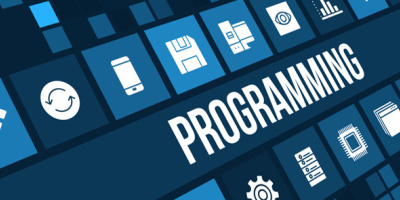List parameters are a useful feature found in many OS/400 commands. These types of parameters allow you to enter multiple values into a single parameter. For example, when you prompt the Save Object (SAVOBJ) command, the Object (OBJ) parameter initially provides two entry fields. Keying a plus sign (+) into either entry, causes the system to expand the entry field list allowing up to 300 objects to be entered. If you enter three objects, the OBJ parameter might look like this:
OBJ(OBJECTA OBJECTB OBJECTC)
The example you have just seen is called a simple list. However, in another type of list called a list within a list, each entry contains two or more values. For example the Send Net File (SNDNETF) command has a parameter called User ID (TOUSRID). Each TOUSRID value is made up of two elements: the user ID and the address. If you wish to send a file to two user IDs, the TOUSRID parameter might look like this:
TOUSRID((USERA ADDRA) (USERB ADDRB))
The command-definition language allows you to create your own commands which contain simple list and list within list parameters. You accomplish this with a Parameter Definition (PARM) statement with a Maximum values allowed (MAX) value greater than one. A list within a list also requires the use of Element Definition (ELEM) statements.
The command definition for a list parameter is not difficult to code. However, processing the list in a command-processing program (CPP) is not so easy because the CPP receives the entire list as a single variable. This variable contains a two-byte, binary prefix indicating the number of entries in the list. List within list parameters are even more difficult to deal with because each inner list has an additional 2-byte binary prefix indicating the number of inner list entries.
The Extract List (EXTLST) command in QUSRTOOL simplifies the task of processing both simple and list within list parameters in a CL program.
Parameters
LIST
Specify the CL program variable that contains the list to be processed. This must be defined as a character variable and can be up to 2,000 bytes long.
ELMLEN
Specify the length of each element for a simple list, or the combined lengths of the elements in a multiple list. Valid values range from 1 to 100.
ELEMENT
Specify the CL program variable that is to contain the extracted list element. This must be defined as a 100-byte character variable. For a simple list, this contains the current list element, left justified. For a list within a list, use the substring function to extract each element.
CURNBR
Specify the current element number being processed. This must be defined as a five-digit decimal variable with no decimal positions. Set the value to zero to return the first element from the list. Upon execution, this value is automatically incremented by one for each element returned. When the last element is returned, the value is set to -1.
MULTILIST
Specify whether the list is a simple list or a list within a list.
*NO: The list is a simple list.
*YES: The list is a list within a list (referred to as a multiple list by this
tool).
Example
To see how this tool works, let's look at an example. The following statement shows the command definition of a simple list parameter:
PARM KWD(LIST) TYPE(*CHAR) + LEN(10) MAX(50) + PROMPT('List') This parameter allows you to specify up to 50 entries. Each entry can be up to 10 characters in length. 1 contains the CL program to process this parameter using the EXTLST command.
This parameter allows you to specify up to 50 entries. Each entry can be up to 10 characters in length. Figure 1 contains the CL program to process this parameter using the EXTLST command.
Two variable definitions used as parameters by the EXTLST command require special considerations. The &LIST variable is defined as a character variable with a length of 502. The length is calculated by multiplying the LEN parameter times the MAX parameter and adding the two-byte binary prefix-in this case, (10 x 50) + 2 = 502. The &ENTRY variable is defined as a character variable with a length of 10, to match the length (LEN) of the LIST parameter of the command.
Now let's look at the program logic. The EXTLST command is processed in a loop. The command specifies the name of the list variable, the number of elements in the list, the return variable for the element, and the current number variable. When an element is retrieved from the list, EXTLST automatically increments &CURNBR. When all the elements have been processed, EXTLST returns a value of - 1 in the &CURNBR variable.
After the EXTLST command executes, the program checks the &CURNBR variable. If its value is greater than zero, the value of the list element is returned in the &ELEMENT variable. Since &ELEMENT is a 100-byte variable but the elements in the list are only 10 bytes each, the program must extract the first 10 positions into the &ENTRY variable using the substring (%SST) function. At this point, the &ENTRY variable contains the value of one element in the list. Place your code to process the value in the &ENTRY variable here-inside the loop. The program then branches back to EXTLST command to repeat the loop until you've exhausted the entries in the list.
You have just seen an example of how to process a simple list using the EXTLST command. You can also process lists within lists by specifying *YES for the Multiple List (MULTILIST) parameter of the EXTLST command. For an example of this, refer to the source member EXTLST in file QATTINFO in library QUSRTOOL.
Robin Klima is a senior technical editor for Midrange Computing.
This tool is documented in Midrange Computing's QUSRTOOL Command Reference. The manual contains explanations and syntax diagrams for more than 300 obscure yet useful tools.
The Extract List (EXTLST) Command
Figure 1 Example of EXTLST Command
PGM PARM(&LIST) DCL VAR(&LIST) TYPE(*CHAR) LEN(502) DCL VAR(&ENTRY) TYPE(*CHAR) LEN(10) DCL VAR(&CURNBR) TYPE(*DEC) LEN(5 0) DCL VAR(&ELEMENT) TYPE(*CHAR) LEN(100) LOOP: EXTLST LIST(&LIST) ELMLEN(10) ELEMENT(&ELEMENT) + CURNBR(&CURNBR) IF COND(&CURNBR *GT 0) THEN(DO) CHGVAR VAR(&ENTRY) VALUE(%SST(&ELEMENT 1 10)) /* . */ /* . Code to process the &ENTRY variable */ /* . */ GOTO CMDLBL(LOOP) ENDDO ENDPGM




















 More than ever, there is a demand for IT to deliver innovation. Your IBM i has been an essential part of your business operations for years. However, your organization may struggle to maintain the current system and implement new projects. The thousands of customers we've worked with and surveyed state that expectations regarding the digital footprint and vision of the company are not aligned with the current IT environment.
More than ever, there is a demand for IT to deliver innovation. Your IBM i has been an essential part of your business operations for years. However, your organization may struggle to maintain the current system and implement new projects. The thousands of customers we've worked with and surveyed state that expectations regarding the digital footprint and vision of the company are not aligned with the current IT environment. TRY the one package that solves all your document design and printing challenges on all your platforms. Produce bar code labels, electronic forms, ad hoc reports, and RFID tags – without programming! MarkMagic is the only document design and print solution that combines report writing, WYSIWYG label and forms design, and conditional printing in one integrated product. Make sure your data survives when catastrophe hits. Request your trial now! Request Now.
TRY the one package that solves all your document design and printing challenges on all your platforms. Produce bar code labels, electronic forms, ad hoc reports, and RFID tags – without programming! MarkMagic is the only document design and print solution that combines report writing, WYSIWYG label and forms design, and conditional printing in one integrated product. Make sure your data survives when catastrophe hits. Request your trial now! Request Now. Forms of ransomware has been around for over 30 years, and with more and more organizations suffering attacks each year, it continues to endure. What has made ransomware such a durable threat and what is the best way to combat it? In order to prevent ransomware, organizations must first understand how it works.
Forms of ransomware has been around for over 30 years, and with more and more organizations suffering attacks each year, it continues to endure. What has made ransomware such a durable threat and what is the best way to combat it? In order to prevent ransomware, organizations must first understand how it works. Disaster protection is vital to every business. Yet, it often consists of patched together procedures that are prone to error. From automatic backups to data encryption to media management, Robot automates the routine (yet often complex) tasks of iSeries backup and recovery, saving you time and money and making the process safer and more reliable. Automate your backups with the Robot Backup and Recovery Solution. Key features include:
Disaster protection is vital to every business. Yet, it often consists of patched together procedures that are prone to error. From automatic backups to data encryption to media management, Robot automates the routine (yet often complex) tasks of iSeries backup and recovery, saving you time and money and making the process safer and more reliable. Automate your backups with the Robot Backup and Recovery Solution. Key features include: Business users want new applications now. Market and regulatory pressures require faster application updates and delivery into production. Your IBM i developers may be approaching retirement, and you see no sure way to fill their positions with experienced developers. In addition, you may be caught between maintaining your existing applications and the uncertainty of moving to something new.
Business users want new applications now. Market and regulatory pressures require faster application updates and delivery into production. Your IBM i developers may be approaching retirement, and you see no sure way to fill their positions with experienced developers. In addition, you may be caught between maintaining your existing applications and the uncertainty of moving to something new. IT managers hoping to find new IBM i talent are discovering that the pool of experienced RPG programmers and operators or administrators with intimate knowledge of the operating system and the applications that run on it is small. This begs the question: How will you manage the platform that supports such a big part of your business? This guide offers strategies and software suggestions to help you plan IT staffing and resources and smooth the transition after your AS/400 talent retires. Read on to learn:
IT managers hoping to find new IBM i talent are discovering that the pool of experienced RPG programmers and operators or administrators with intimate knowledge of the operating system and the applications that run on it is small. This begs the question: How will you manage the platform that supports such a big part of your business? This guide offers strategies and software suggestions to help you plan IT staffing and resources and smooth the transition after your AS/400 talent retires. Read on to learn:
LATEST COMMENTS
MC Press Online